Envoy: Shark Cull exposes hammerhead sharks caught in bather nets on the Central Coast
These harmless hammerhead sharks are believed to have all died at two Central Coast beaches on one day. Concern has been raised over how they are understood to have been killed.
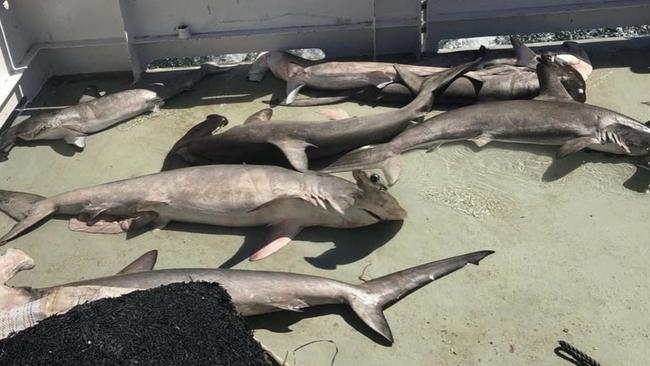
Manly
Don't miss out on the headlines from Manly. Followed categories will be added to My News.
- Push for electric shark barrier in Sydney
- Dolphins, turtles dying in shark nets of the northern beaches
This shocking image of dead hammerhead sharks reveals the death toll of innocent marine life caught in bather nets at just two beaches on one day in February.
The confronting photo is one of 2000 taken by shark net contractors and released by the Department of Primary Industries following an freedom of information request.
Hammerhead sharks are regarded as harmless to humans.
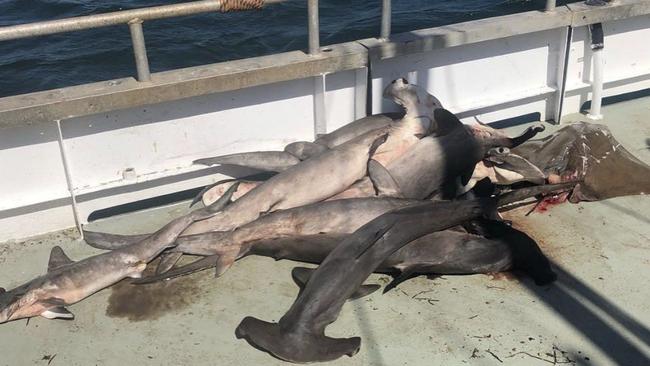
The DPI confirmed the dead sharks were from nets from Blacksmith and Lakes beaches on the Central Coast.
Andre Borell, who shared the images obtained by The Hype Project, said the hammerhead sharks were the haul collected from nets on just one day, before they were taken out to sea and dumped.
“The hammerhead shark has never been responsible for a fatality anywhere,” Mr Borell, 33, a diver and videographer, said.
He claims bather nets have killed more than 10,000 hammerheads in Australia since they were introduced in the 1930s.
Some types of hammerhead are endangered, including the scalloped hammerhead.
Those in the picture are believed to be smooth hammerheads and while they are not endangered, they are regarded as vulnerable by Marine Conservation.
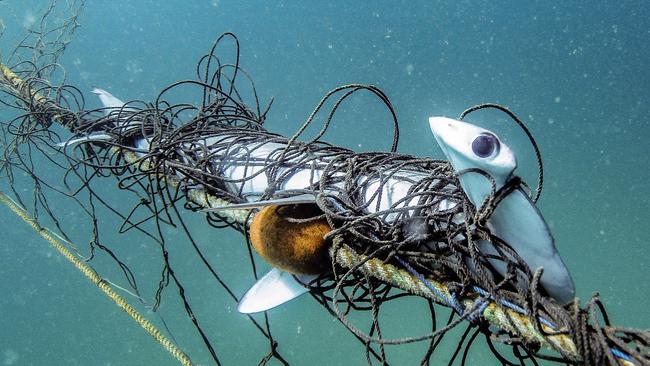
Last summer many endangered creatures were caught in bather nets.
In 2019/2020 on the northern beaches alone, 32, threatened or protected species were snared in meshing.
Every year nets are placed at 51 beaches between Newcastle and Wollongong.
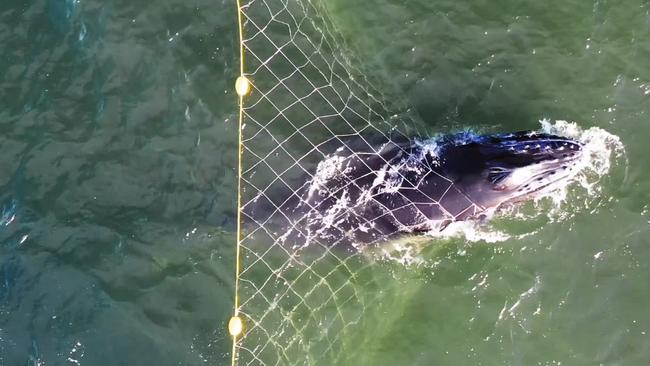
Mr Borell who has produced a feature film called Envoy: Shark Cull with covert footage on how the shark nets capture non-target species, including rays, turtles and dolphins, said he was a diver and a filmmaker and this was a passion project for him.
“I am the co-founder of a video production company,” he said.
“It’s something I really wanted to do.

“We do not have any funding or financial support for this.
“We decided to do it because I’m a passionate diver, I love the ocean and it makes me really quite angry to see this happening.”
He said he wanted to raise awareness of how there are better ways of protecting swimmers than shark nets, which he said are outdated.
Those speaking out in the film narrated by actor Eric Bana, include two surfing legends Layne Beachley and Tom Carroll from Sydney’s northern beaches, along with Lawrence Chlebeck from Humane Society International, based in Avalon, and Lindsey Lyon of Ocean Guardian, a eco-friendly shark deterrent technology based in Warriewood.
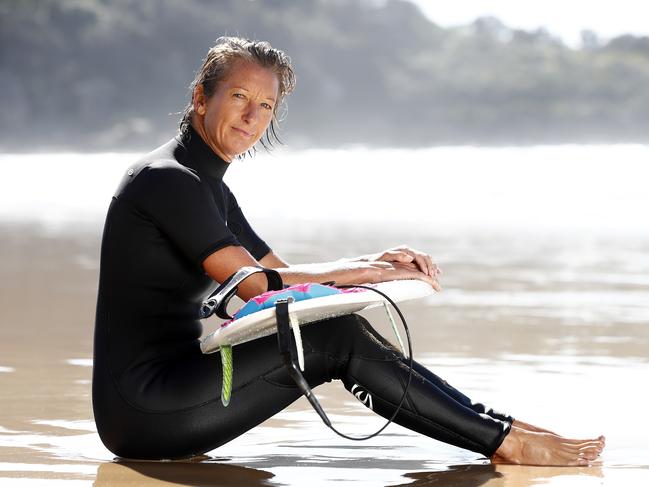
His technology emits an electrical pulse that is sensitive and uncomfortable for sharks and causes them to turn away.
The technology is already being used on individual surfboards.
But CEO Lindsay Lyon said he is seeking funding of up to $2.3m to run a pilot of the technology as a beach barrier.
Another option already being trialled is smart drumlines, which involve catching great whites with bait, then tagging and dragging them out to sea to be released.
Mr Chlebeck said the hammerhead sharks were “critical cogs in a marine eco system”.
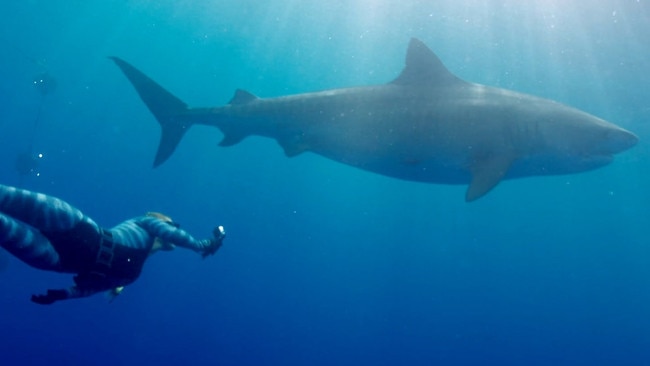
He said it was time to modernise how bathers are protected with smart drumlines or drone surveillance.
Mr Borrell said the 100-minute film had taken two years to pull together.
In the film are some of the images released by the DPI.
For more details of film screenings and the cause go to envoyfilm.com.au.

